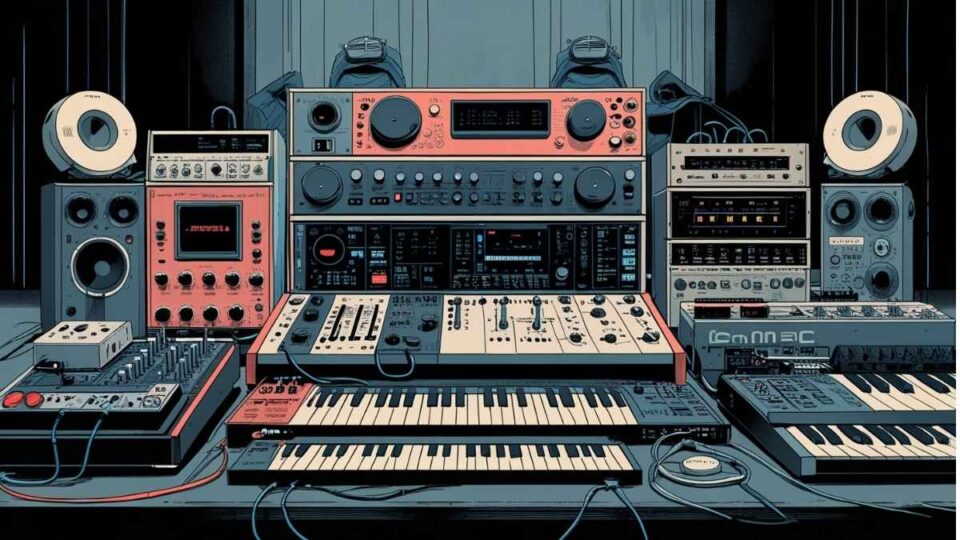Introduction: Why Music Technology Matters
In today’s fast-moving music world, technology is no longer just a tool—it’s the backbone of creativity. From bedroom producers to global superstars, the way we create and experience sound is shaped by innovations in music technology grosssound. This term represents the fusion of advanced synthesizers, high-end mixers, and modern studio gear that allow musicians to push boundaries like never before.
Think of it this way: just as an artist needs the right brushes and colors to paint, a music creator needs the right setup to bring their ideas to life. Whether you’re producing hip-hop beats, electronic tracks, or recording a live band, the equipment you choose determines the quality, texture, and impact of your sound.
The Evolution of Music Technology Grosssound
Music production has come a long way since the days of analog tape machines and simple four-track recorders. Today, music technology grosssound is about blending digital and analog worlds for the best of both.
- Synthesizers: From classic Moog and Roland designs to cutting-edge software synths, they allow producers to create everything from basslines to atmospheric pads.
- Mixers: Once bulky consoles, modern digital mixers are compact, powerful, and customizable. They shape sound with precision and integrate seamlessly with DAWs (Digital Audio Workstations).
- Studio Gear: From MIDI controllers to studio monitors, gear has become smarter and more user-friendly, giving beginners and pros access to professional-quality sound.
This progression has made professional music production more accessible than ever before, fueling independent artists and home studios worldwide.
Categories of Music Tech Gear
Just like event venues have seating categories, music creators can think of studio gear in “sections” too. Here’s a breakdown:
| Category | Role in Production | View on Sound Quality |
| Synthesizers & Keyboards | Generate melodies, basslines, and unique textures | Expansive & creative |
| Mixers | Balance instruments, vocals, and effects | Clear & polished |
| Studio Monitors | Provide accurate playback of recordings | True-to-life sound |
| Audio Interfaces | Connect instruments and microphones to your computer | Essential for clarity |
| MIDI Controllers | Control software instruments and DAWs | Flexible & hands-on |
| Recording Microphones | Capture vocals and instruments with precision | Detailed & expressive |
Each of these categories contributes to the “view” of your music—whether it’s clean, powerful, or experimental.
Choosing the Right Gear for Your Setup
Not all studios are created equal. Just like choosing the right seat at a concert, selecting the right equipment for your setup matters.
- Budget Studios (Starter Level): Ideal for beginners. A basic audio interface, a good USB mic, and entry-level studio monitors can get you started.
- Mid-Tier Studios: Add more specialized microphones, a versatile mixer, and software synths. Perfect for serious hobbyists or semi-pros.
- Pro Studios: Invest in premium hardware synths, analog mixers, high-end monitors, and outboard gear for world-class sound.
Pro tip: If your focus is electronic music, prioritize synths and MIDI controllers. For vocal-heavy genres, put more budget into microphones and preamps.
Accessibility in Music Technology
Just as concert venues offer accessible seating, music gear manufacturers are making technology more inclusive. For example:
- Compact controllers make it easier for musicians with limited space.
- Software-based solutions reduce costs while offering high-quality results.
- Adaptive instruments are being developed for musicians with disabilities, ensuring that everyone can be part of music creation.
Premium & VIP Gear: The Luxury Tier
If you want the “front row experience” in music production, premium gear is where you’ll find it.
- Analog Synths (Moog, Prophet-5, Oberheim): Known for warm, timeless sounds.
- High-End Mixers (SSL, Neve): The industry standard for major recording studios.
- Reference Monitors (Genelec, Focal): Provide ultra-accurate sound reproduction.
This level of music technology grosssound is about achieving the highest fidelity, often used by top producers in film scoring, EDM, and pop production.
Final Thoughts: Building Your Grosssound Setup
The world of music technology grosssound is like entering a giant concert hall—you can sit in the back with a simple setup, or get the best seat in the house with premium gear. The right choice depends on your goals, budget, and style of music.
Whether you’re setting up a home studio or upgrading to pro-level equipment, the key is balance. A well-chosen combination of synthesizers, mixers, and studio gear will help you achieve the sound you imagine.
For reliable purchases and gear guides, check trusted resources like Sweetwater and Thomann.
FAQs
Q1. What does “music technology grosssound” mean?
It refers to a modern setup combining synthesizers, mixers, and studio gear that allows musicians to create high-quality, professional sound.
Q2. Do I need expensive gear to start producing music?
Not at all. Many beginners start with affordable USB microphones, entry-level monitors, and software synths before upgrading.
Q3. Which is more important: synths or mixers?
It depends on your style. Electronic producers may prioritize synths, while bands and vocal-driven genres benefit more from a strong mixer and microphone setup.
Q4. Can I make professional music at home?
Yes! With today’s technology, even bedroom producers can release chart-topping tracks if they choose the right gear and learn proper mixing techniques.
Q5. What’s the biggest mistake beginners make with music gear?
Overspending on premium gear without learning the basics. Start small, understand your tools, then upgrade as your skills grow.

